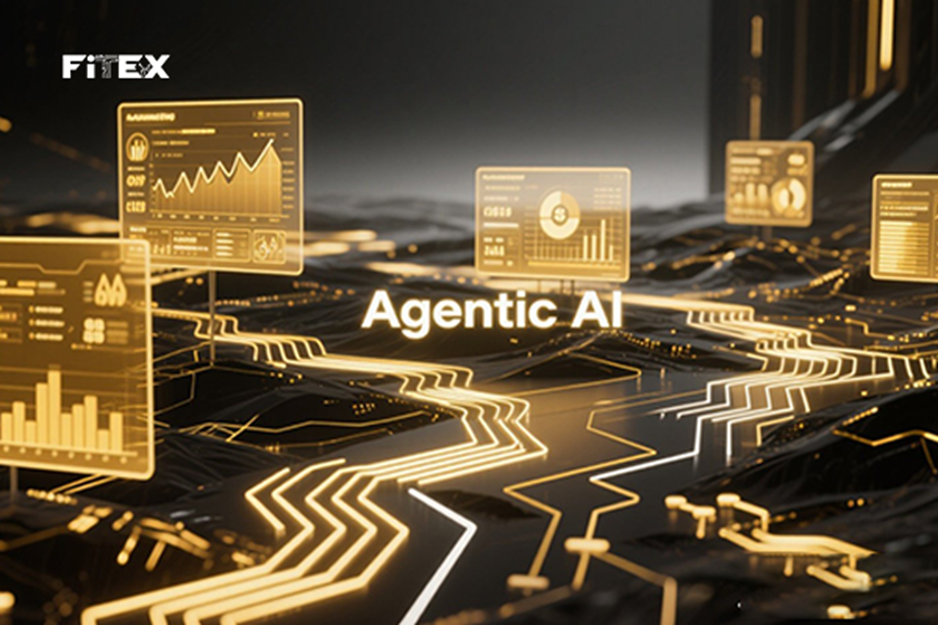Once seen as an experimental technology, Agentic AI has now emerged as a mission-critical tool, reshaping industries and redefining competitive advantage.
The numbers are telling. A 2025 Gravitee survey found that 72% of mid-to-large enterprises are already deploying Agentic AI, while another 21% plan adoption by 2027. The market momentum is equally striking: according to MarketsandMarkets, the global AI agent market is projected to surpass $47 billion by 2030, with an annual growth rate of nearly 45%. IDC reports that by 2025, over 40% of enterprise workflows will be orchestrated by AI-driven agents, underscoring the speed of adoption.
The real question for decision-makers is no longer if but when and how to adopt. Should you embrace Agentic AI today, or wait until it matures? And more importantly, what practical roles does it play in real-world business and technology? Partner with us to shape the future!

What Exactly Is Agentic AI?
Agentic AI—often called autonomous artificial intelligence—is a new class of intelligent systems designed to pursue goals independently, reason through complex challenges, and execute workflows with minimal human oversight. Unlike traditional automation or even many generative AI tools, Agentic AI demonstrates four defining abilities:
- Reasoning – interpreting data, analyzing problems, and weighing trade-offs.
- Planning – designing multi-step strategies aligned with context.
- Execution – carrying out tasks seamlessly across multiple platforms.
- Adaptation – learning from outcomes and improving performance over time.
These capabilities allow Agentic AI to:
- Integrate across diverse enterprise systems.
- Perform complex, multi-step actions at scale.
- Automate decision-making processes faster than legacy tools.
In essence, Agentic AI doesn’t just assist humans—it functions as a proactive digital partner, capable of managing workflows end-to-end.
5 Practical Use Cases of Agentic AI in Business and Technology
1. Information Technology: Beyond Automation
The IT sector is one of the earliest adopters of Agentic AI. According to Gartner’s 2025 CIO Survey, 68% of IT leaders are prioritizing AI-driven automation to reduce operational costs and strengthen cybersecurity.
Agentic AI autonomously detects and neutralizes cyber threats in real time—tasks that would otherwise require large teams of analysts. It also accelerates development by generating, refactoring, and debugging code. For instance, Amazon’s Transform AI can optimize network configurations, rewrite code, and coordinate digital transformation strategies. The outcome is faster product releases, stronger resilience, and measurable cost savings.

2. Agriculture: Precision and Sustainability
Agriculture, traditionally slower in adopting advanced technologies, is now transforming through Agentic AI. By integrating sensor data, satellite imagery, and predictive analytics, it enables real-time optimization of irrigation, fertilization, and crop monitoring.
A 2025 AgTech Insights Report highlighted that 35% of large-scale farms are already experimenting with AI agents to enhance yields and reduce resource consumption. In livestock management, Agentic AI adjusts feeding schedules, monitors herd health, and alerts veterinarians at the first sign of disease—boosting both productivity and sustainability.
3. Supply Chain and Logistics: Self-Correcting Networks
Supply chains thrive on agility, and Agentic AI delivers just that. Unlike predictive analytics tools that merely forecast disruptions, Agentic AI acts. When shipments are delayed, the system can reroute deliveries, update stakeholders, and authorize alternative logistics providers autonomously.
According to McKinsey’s 2025 Global Supply Chain Report, companies using AI-driven supply chain orchestration have achieved a 20–30% improvement in resilience and up to 15% reduction in operating costs. In practice, Agentic AI transforms global logistics from reactive systems into self-correcting networks.
4. Retail: Intelligent Customer Engagement
Retailers are leveraging Agentic AI as a digital concierge for personalized shopping experiences. Instead of static retargeting emails, Agentic AI identifies abandonment triggers and adapts outreach strategies in real time.
Deloitte’s 2025 Retail AI Study shows that 62% of consumers are more likely to remain loyal to retailers offering personalized AI-driven experiences. For example, Walmart uses Agentic AI to curate product suggestions, optimize pricing, and enhance inventory management. These proactive engagements foster trust and build loyalty, making the AI feel less like a tool and more like a human agent.
5. Healthcare: Smarter Care, Better Outcomes
Healthcare is one of the fastest-growing application areas for Agentic AI. According to Frost & Sullivan, the global AI-in-healthcare market will exceed $188 billion by 2030, and autonomous AI agents are a driving force behind this growth.
Hospitals use Agentic AI to optimize bed occupancy rates, streamline appointment scheduling, and improve staff allocation. Beyond administration, it assists clinicians by analyzing scans, monitoring wearable data, and suggesting personalized treatments. eClinicalWorks, for example, leverages Agentic AI to enrich patient records and interact with patients through chat, voice, and text—leading to faster diagnoses and stronger patient trust.
Beyond Benefits: Challenges and Limitations
While the benefits are compelling, business leaders must remain mindful of the challenges:
- Ethical Risks: Questions of accountability when AI acts independently.
- Data Dependency: Quality data remains the backbone of reliable reasoning.
- Integration Costs: Deployment in legacy systems can be resource-intensive.
- Trust & Oversight: Human governance is essential for sustainable adoption.
Agentic AI vs. Generative AI: Key Differences
It’s tempting to conflate Agentic AI with generative AI tools like ChatGPT. The difference lies in autonomy:
- Generative AI: Creates content based on user prompts but requires constant direction.
- Agentic AI: Operates as an independent agent—planning, executing, and adapting to meet business goals.
Put simply: Generative AI helps you create. Agentic AI helps you act.
The Future of Agentic AI (2026 and Beyond)
Looking ahead, three major trends are shaping the trajectory of Agentic AI:
- Industry-Specific Agents: Tailored solutions for healthcare, finance, and law.
- Collaborative AI Ecosystems: Networks of agents working seamlessly across value chains.
- Regulation and Governance: As adoption scales, global standards will ensure transparency, accountability, and trust.
By 2026, IDC predicts that over 50% of Fortune 500 companies will rely on AI agents to manage at least one core business function. The organizations that adopt early will not only unlock efficiency but also shape the rules of competition.
Final Thoughts
FITEX empowers organizations to integrate Agentic AI responsibly and strategically. As technology evolves, those who act now will lead tomorrow’s market. Future-proof your business—partner with FITEX today to harness innovation, ensure ethical adoption, and stay ahead in the era of intelligent transformation.
his article is an advertisement and Mehr News Agency has no opinion on its content.
